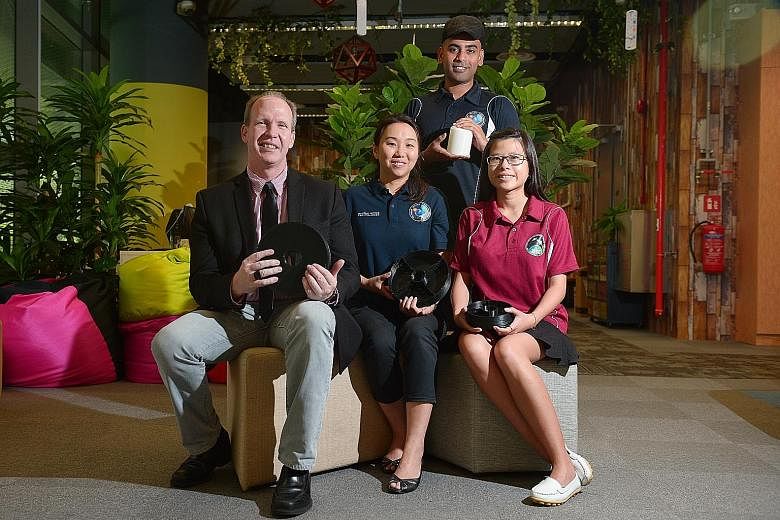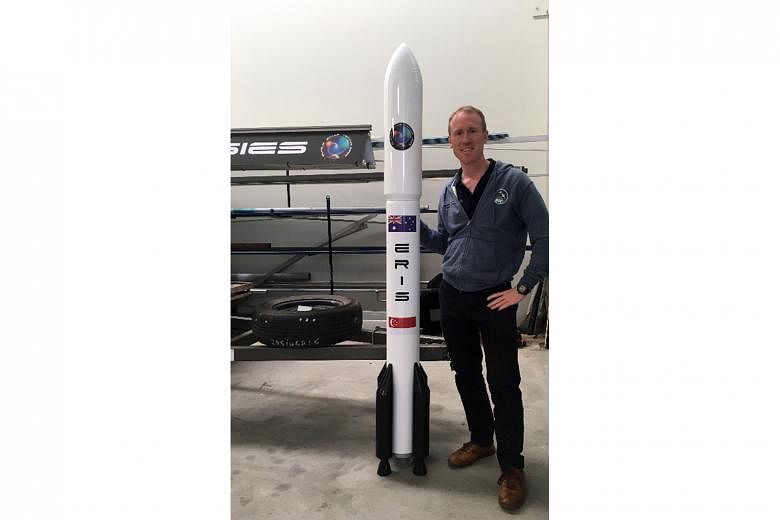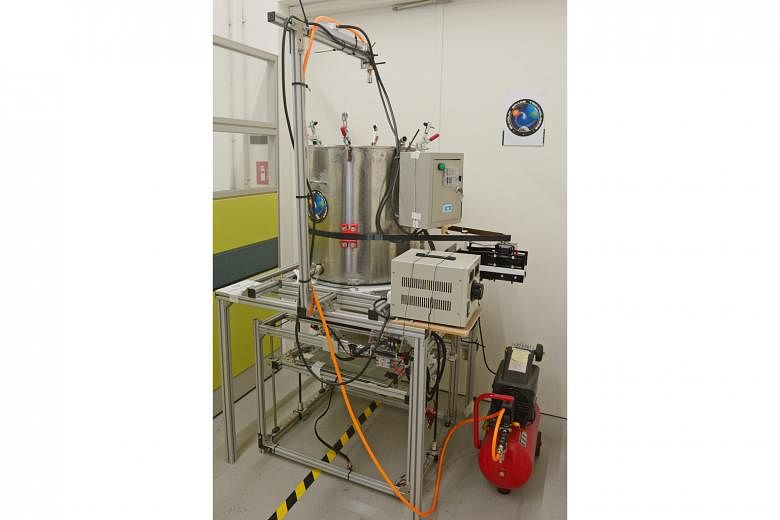When home-grown start-up Gilmour Space Technologies successfully launched a self-made rocket in Australia two weeks ago, it achieved two firsts.
It is the first Singapore company to achieve the feat. It is also said to be the first in the world to use 3D printed fuel from combining two materials, the company's "secret sauce" that dramatically reduces the cost of rocket launches.
Rockets are fired into space for everything from removing space junk to positioning satellites for communications, navigation and surveillance.
Behind this breakthrough is a team of seven researchers, engineers and ex-bankers in the campus of the Singapore University of Technology and Design (SUTD) at Somapah Road, where Gilmour Space Technologies' office resides. The team has designed a 3D printer, currently a prototype and patent-pending, for this purpose.
"Dual material 3D printers are in use today, but they are small with limited choices in terms of materials," said Mrs Michelle Gilmour, who co-founded the start-up with her husband Adam, an Australian, four years ago.
"Our proprietary rocket fuel cannot be printed with existing 3D printers," said the 42-year-old, who became a Singaporean in 2009.
The start-up is a beneficiary of the National Additive Manufacturing Innovation Cluster - formed last September by Spring Singapore and the National Research Foundation to help companies develop capabilities in 3D printing - having received a "six-figure" sum in funding through SUTD.
Gilmour Space Technologies, which is building a larger commercial version of the 3D printer, aims to provide rockets to carry small loads such as satellites for sub-orbital experiments in the next 18 months. The company plans to price each launch at US$750,000 as (S$1 million) opposed to the US$1 million or more it costs today.
Larger rockets for carrying orbital satellites are also being planned for production, with the price of each launch starting from US$5 million as opposed to the US$15 million it costs today. The company is seeking funding from venture-capital firms to do this.
The couple, who have been living in Singapore for more than 20 years, has self-funded the business with more than US$2 million injected to date.
They quit their banking jobs here two years ago to focus on providing rocket-launch services - which they think will take the company to profitability.
"We think the space industry is going through a renaissance. There are more and more uses being developed for space satellites in areas such as earth observation, global communication systems and asteroid mining," said Mrs Gilmour.
It makes rockets in Australia through its wholly owned subsidiary there.
It has also secured launch sites in Australia, and is working with National Aeronautics and Space Administration (Nasa) and Kennedy Space Center in the United States on more launch sites.
Two weeks ago, it launched its first test rocket in Queensland, Australia. The 3.6m rocket went up an estimated 5km successfully, demonstrating that its 3D-printed fuel technology works.
"SUTD is key to this success. They are involved in many aspects of our business," said Mrs Gilmour, adding that the researchers and engineers in her company here are SUTD graduates.
She recognised that Singapore is not a usual place for starting a space business, but noted: "The government is recognising space as a new and emerging business area, which is very encouraging."




